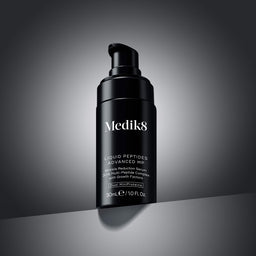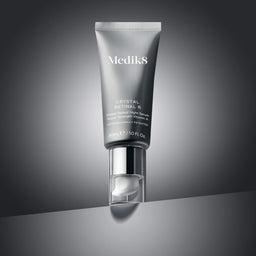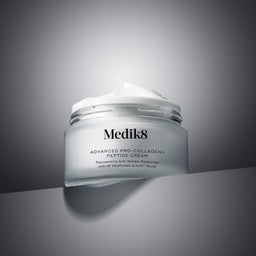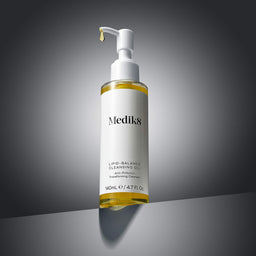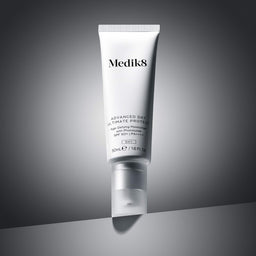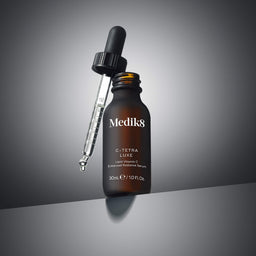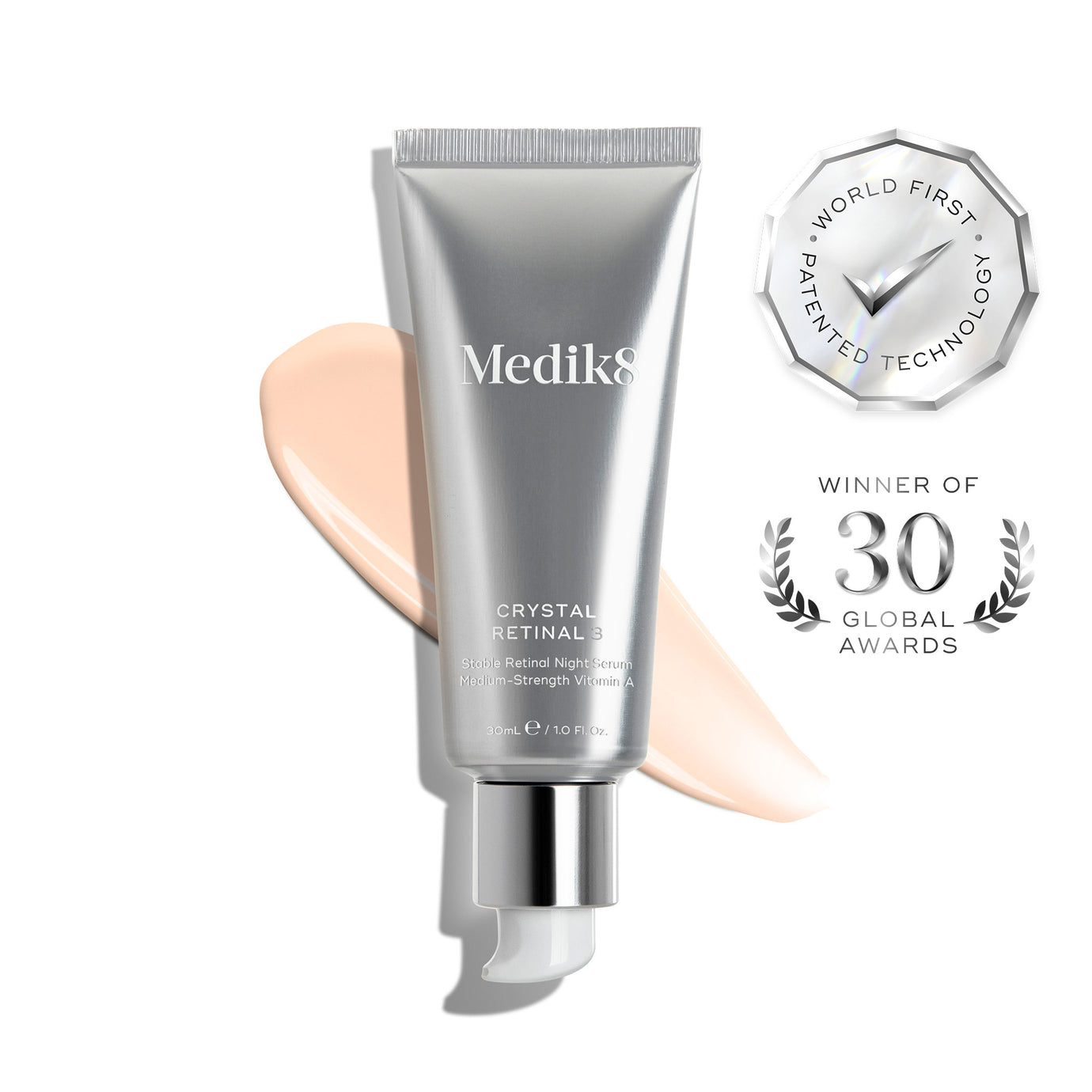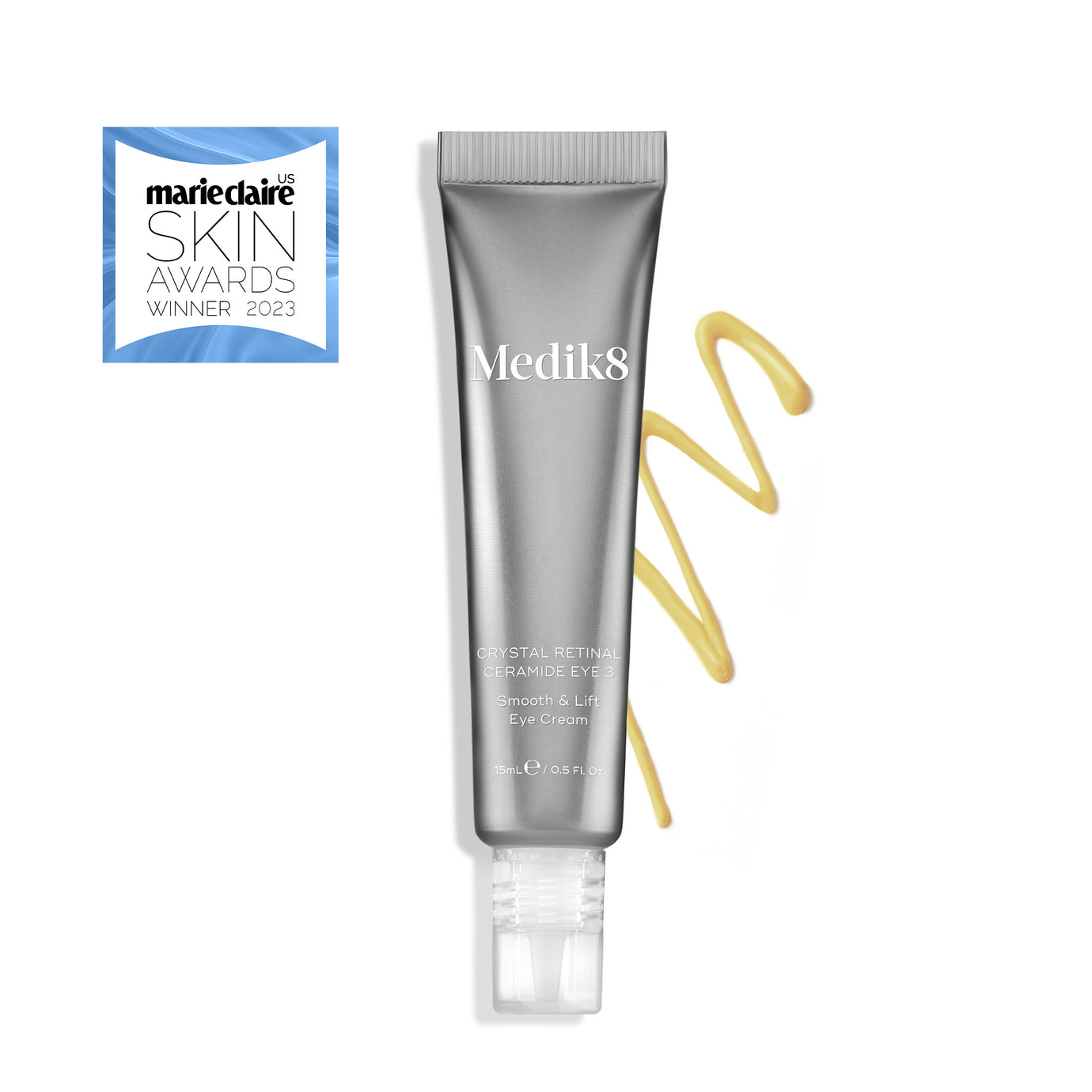Everything You Need to Know About Using Retinol & Hyaluronic Acid Together
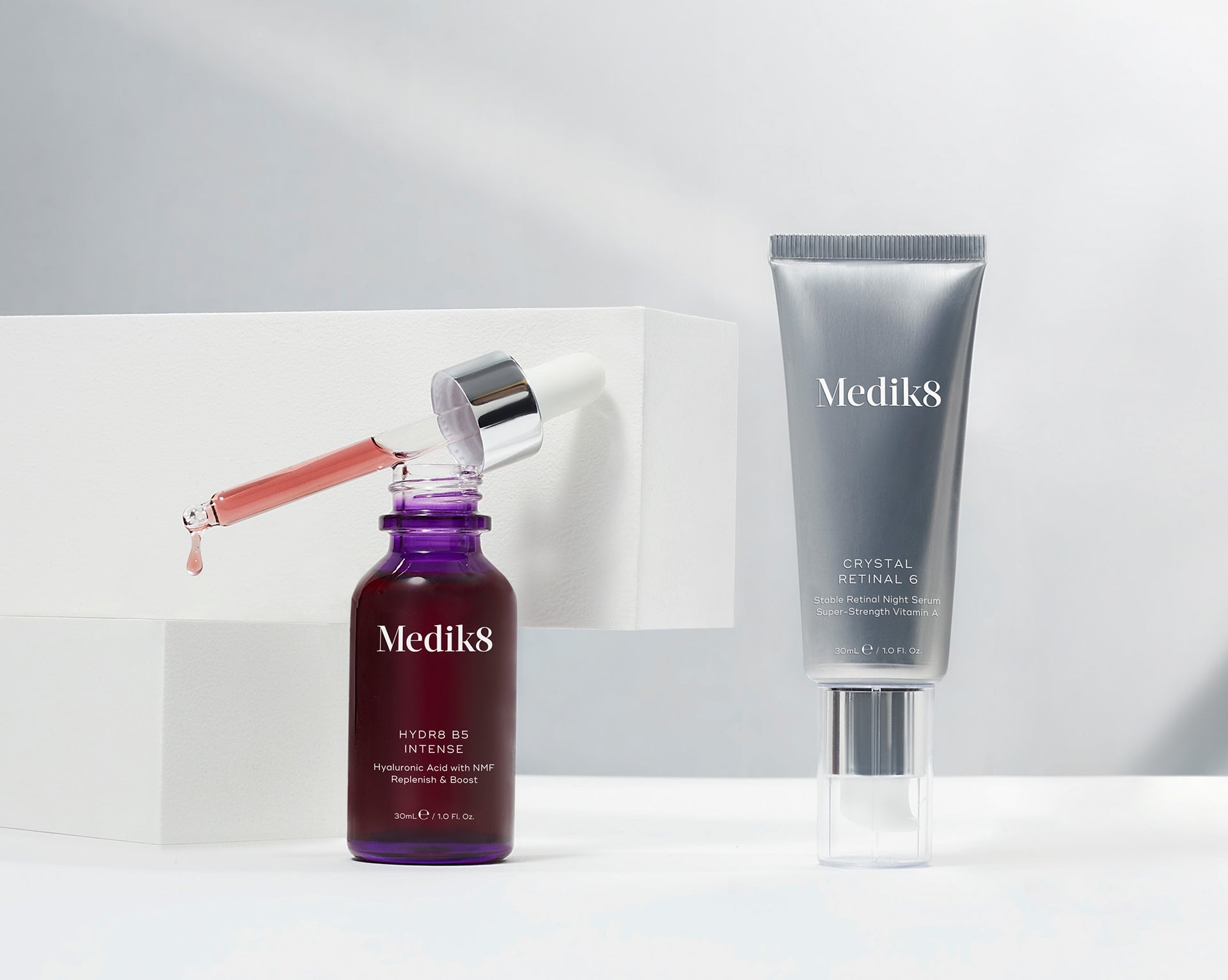
At Medik8, we are often asked about which ingredients pair well together on the skin. With so many skincare ingredients to choose from, it can be difficult to know what works well together and what doesn’t.
Vitamin A
and hyaluronic acid are two powerful ingredients with very different benefits when applied to the skin. Retinol is known for its youth-renewing properties, whereas hyaluronic acid is popular for its deeply hydrating and visibly plumping benefits. When combined, retinol and hyaluronic acid can help to improve the appearance of common signs of ageing including fine lines, wrinkles
and loss of elasticity for a visibly smooth, plump and deeply hydrated complexion.
Keep on reading to find out everything you need to know about how to use vitamin A and hyaluronic acid together in your skincare routine, along with our favourite product recommendations for radiant, youthful-looking skin.
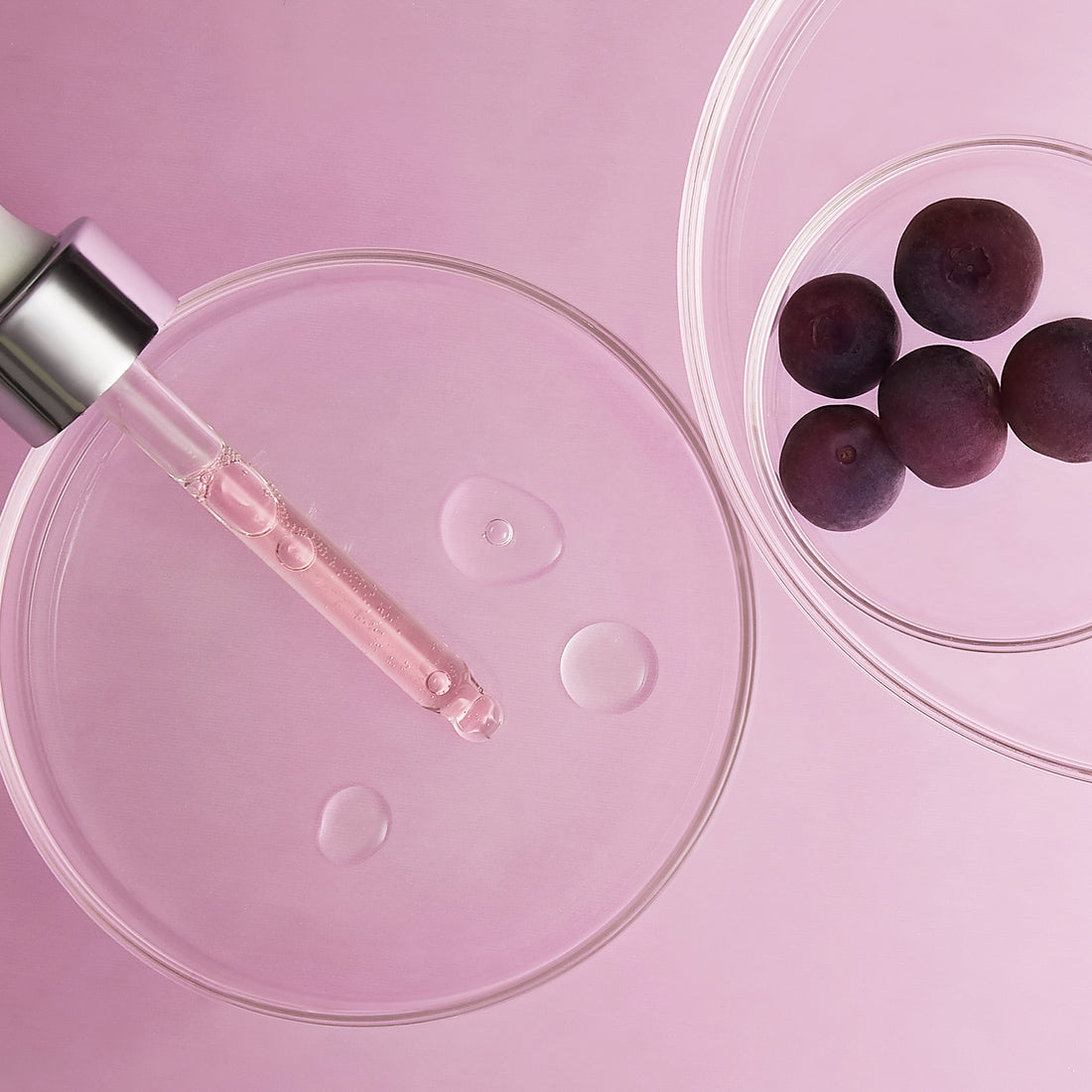
What is hyaluronic acid?
Hyaluronic acid is a humectant. Humectants are substances that attract water from the air, or from the skin’s deepest layers. With the ability to attract and retain more than 1,000 times its own weight in water, hyaluronic acid draws moisture from the skin’s deepest layers into the upper layers, leaving it visibly plump, supple and nourished with the appearance of fine lines and wrinkles visibly reduced.
Hyaluronic acid is found naturally within the skin, however, our natural production of hyaluronic acid begins to decline as we age. Therefore, we need to replenish our levels of hyaluronic acid by using topical products that contain this deeply hydrating ingredient.
What is retinol?
Retinol, which we refer to as ‘the classic vitamin A’ at Medik8, is a derivative of vitamin A
that belongs to the retinoid family. Retinoids are clever ingredients that work by stimulating skin cell renewal and encouraging collagen production to enhance the skin’s tone, texture and radiance for a more youthful-looking complexion.
Vitamin A travels through several stages known as the ‘vitamin A pathway’. When applied to the skin, retinol first converts to retinal, and then to retinoic acid. It is at this stage that the ingredient becomes ‘active’ and visible results begin to take place.
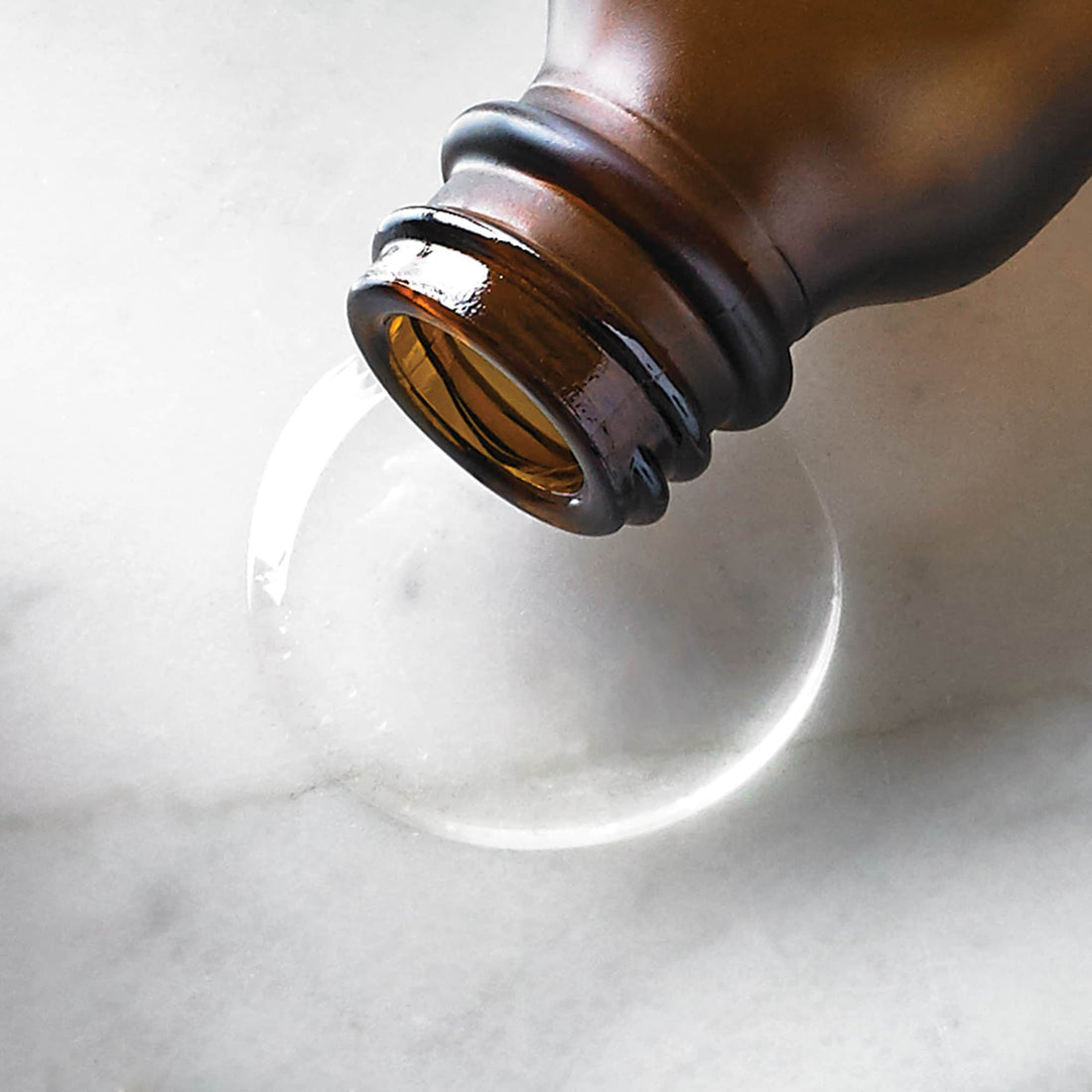
How are retinol and hyaluronic acid different?
Vitamin A and hyaluronic acid can provide the skin with many different benefits:
Can retinol and hyaluronic acid be used together?
Yes, vitamin A and hyaluronic acid can be used together. In fact, both ingredients may help each other to work better on the skin. For example, hyaluronic acid may help to reduce the potential for irritation and dryness when using retinol, as it helps to keep the skin feeling hydrated and comforted during vitamin A use.
Infact, vitamin A and hyaluronic acid work so well together that we have combined them within our best-selling Crystal Retinal serum. Complimenting Crystal Retinal’s youth-renewing benefits, hyaluronic acid is used as a key ingredient in its formula to leave the skin feeling deeply hydrated, moisturised and comfortable.
What are the benefits of using retinol and hyaluronic acid together?
Hyaluronic acid and vitamin A are a perfect pairing in skincare. Vitamin A can be drying and irritating on the skin when you first begin using it, and may cause some redness, flakiness and discomfort. However, hyaluronic acid keeps the skin feeling moisturised and hydrated, which, therefore, helps to reduce vitamin A’s potential for dryness and irritation.
Potential side effects
Like all skincare ingredients, there can be the potential for irritation. If your skin is new to vitamin A, you may experience some mild irritation such as redness and dryness - especially if you apply it too frequently or use too much.
At Medik8, we have reduced any potential for irritation by infusing Time Release and stabilisation technologies into all of our vitamin A products so that the ingredient is slowly released into the skin throughout the night. We also recommend introducing retinoids into the skin gradually, beginning with a low concentration and then working your way up for progressive visible results.
Medik8’s favourite vitamin A: retinal
Retinaldehyde
(retinal for short) is a derivative of vitamin A. It is further along the vitamin A pathway than retinol, and is just one conversion step away from becoming retinoic acid (the active form of vitamin A). This means that it acts faster on the skin than retinol - 11x faster[1] to be exact.
Retinal degrades quickly and is incredibly difficult to stabilise. Therefore, it is rare to find retinal products that deliver truly noticeable results - but not at Medik8! Our groundbreaking Crystal Retinal serum is formulated with our unique patented stabilisation technology to ensure optimal potency and visible, age-defying results.
We also use hyaluronic acid as a key ingredient - complimenting Crystal Retinal’s youth-renewing benefits to leave the skin feeling deeply hydrated and moisturised. Available in a choice of 5 strengths (0.01% - 0.2% retinaldehyde) this next-generation vitamin A allows you to work your way up the Crystal Retinal ladder for progressive visible results with no irritation.
If you’re a vitamin A beginner, we recommend to start with the lowest strength and gradually work your way up. We also recommend phasing the product into your routine, using it twice a week for the first 2 weeks, every other night for the next 2 weeks, then every night.
Layering retinol and hyaluronic acid
When layering skincare, it is important to apply each product in the correct order so that you can achieve optimal visible results. At Medik8, we always recommend applying water-based products first, then oil-based, and then emulsion-based.
An essential part of our CSA Philosophy, you can use vitamin C alongside hyaluronic acid and vitamin A in your skincare routine for visibly brighter, radiant-looking skin. In your morning routine, after cleansing, we recommend applying your hyaluronic acid serum first (water-based), then your vitamin C serum (C-Tetra or C-Tetra Luxe) as this is oil-based, and finally, your sunscreen (emulsion-based).
How to use hyaluronic acid with retinol in your evening skincare routine
Before applying any skincare product, you should first check whether it is water, oil or emulsion-based as this affects the order in which you apply them. Follow our expert guide below on how to correctly layer your hyaluronic acid serum and vitamin A product together in your evening skincare routine for optimum youth-renewing results.
What if my retinol cream already contains hyaluronic acid?
If your retinoid cream already contains hyaluronic acid, it is perfectly fine to use an additional targeted hyaluronic acid serum. However, you don’t need to use a separate hyaluronic acid product if you feel that it isn’t necessary.
A key ingredient in Crystal Retinal, hyaluronic acid ensures that the skin stays hydrated and comfortable during vitamin A use - resulting in a visibly plump and moisturised complexion.
Which hyaluronic acid should I use?
Our hyaluronic acid serums have been expertly formulated to be used alongside Crystal Retinal. When looking for a high-quality hyaluronic acid serum, make sure that it contains multi-weight hyaluronic acid. This means that it has been formulated with different molecular sizes of hyaluronic acid, which allows the ingredient to penetrate into the deepest layers of the skin for maximum visible results.
Both of our hyaluronic acid serums (Hydr8 B5 and Hydr8 B5 Intense) are expertly created with multi-weight hyaluronic acid (small, medium and large molecules) to evenly distribute deep hydration throughout the skin’s many layers. This ensures that the complexion is left visibly supple, nourished and plump.
Hydr8 B5: Our original hyaluronic acid serum for lightweight daily hydration. Suitable for normal to sensitive skin types
Hydr8 B5 Intense: Our supercharged hyaluronic acid serum for normal to dehydrated skin types
Which vitamin A product should I use?
At Medik8, we recommend that everyone should use retinal as it is more potent than retinol and provides visible youth-renewing results - faster. The only reason that someone might choose a retinol product instead, is if they prefer an oil-based, liquid texture.
When looking for a vitamin A product, it is also important to ensure the following:
✓ The products are packaged in air-tight containers and are in opaque, amber coloured packaging
✓ Contain additional complementary ingredients such as ceramides or hyaluronic acid
✓ Are available in a choice of strengths so that you are able to choose the one that’s most suitable for your skin’s tolerance
Our unique retinal encapsulation system within our groundbreaking Crystal Retinal range preserves retinal
power for maximum ongoing results, while ensuring that it is gradually released into the skin throughout the night for minimal irritation.
Our bestselling Crystal Retinal range includes:
The bottom line: Hyaluronic acid and retinol are a skincare power duo
Hyaluronic acid and vitamin A are a perfect pairing in skincare. As mentioned, vitamin A has the potential to be drying and irritating when you first begin using it. However, hyaluronic acid helps to keep the skin feeling deeply hydrated and comfortable, which reduces any potential redness, flakiness and discomfort that can be associated with retinoid use.
Working in synergy, vitamin A helps to improve the appearance of fine lines, wrinkles and encourages the production of collagen for youthful-looking skin. Whereas hyaluronic acid compliments vitamin A’s benefits by visibly smoothing, plumping and firming the complexion.
FAQ's
All of our hyaluronic acid serums (Hydr8 B5 and Hydr8 B5 Intense) are water-based. Therefore, in your evening routine we recommend applying them before Crystal Retinal, which is emulsion-based. If using one of our retinol serums, in the evening you would apply your hyaluronic acid serum first (water-based), and then your retinol serum (oil-based).
You can use our hyaluronic acid serums everyday, twice-a-day. Unlike vitamin A, it doesn’t need to be phased into your skincare regime. If you’re a vitamin A beginner, we recommend gradually phasing retinol/retinal into your routine to help minimise any irritation potential. Start by using it twice a week for the first 2 weeks, every other night for the next 2 weeks, then every night. You can use a hyaluronic acid serum while phasing in your vitamin A product, just make sure to follow our guidelines on how to layer skincare correctly for maximum visible results.
Vitamin A should only be used at night. However, you can use hyaluronic acid and retinoids together in your evening routine. Hyaluronic acid can be used everyday, twice-a-day, therefore it can be included in your morning routine as well.
All of our hyaluronic acid serums are water-based. Therefore, in your evening routine, you should apply your water-based hyaluronic acid serum first, then any oil-based products, and then emulsion-based. Expertly designed to be used after vitamin A, we recommend Advanced Night Restore as the final step in your evening skincare routine.
[1]G. Siegenthaler et al., Retinol and retinal metabolism, Biochemical Journal, 1990, 268, pp 371-378
[2]Proven via independent clinical study on 1 tube of Crystal Retinal 6. Tested on 33 participants over 12 weeks
